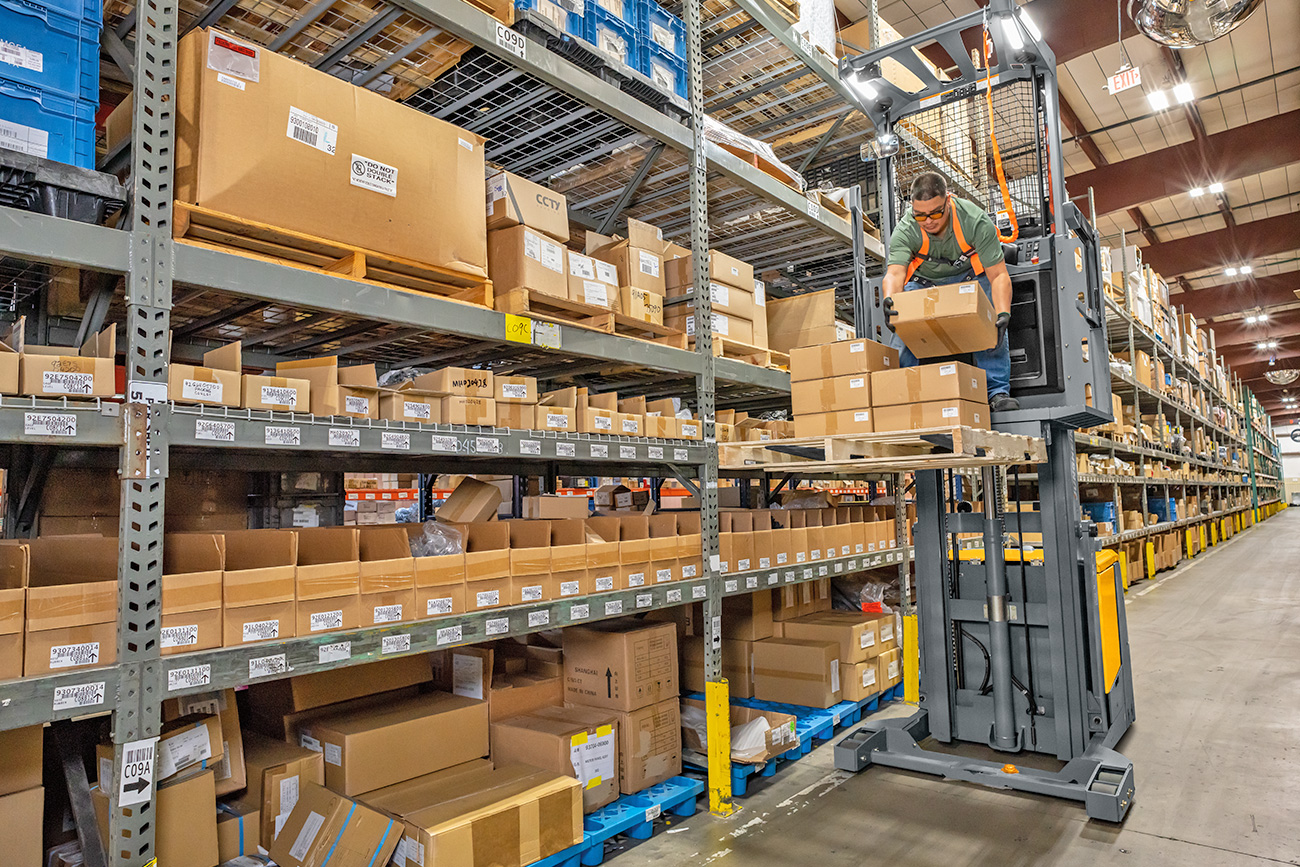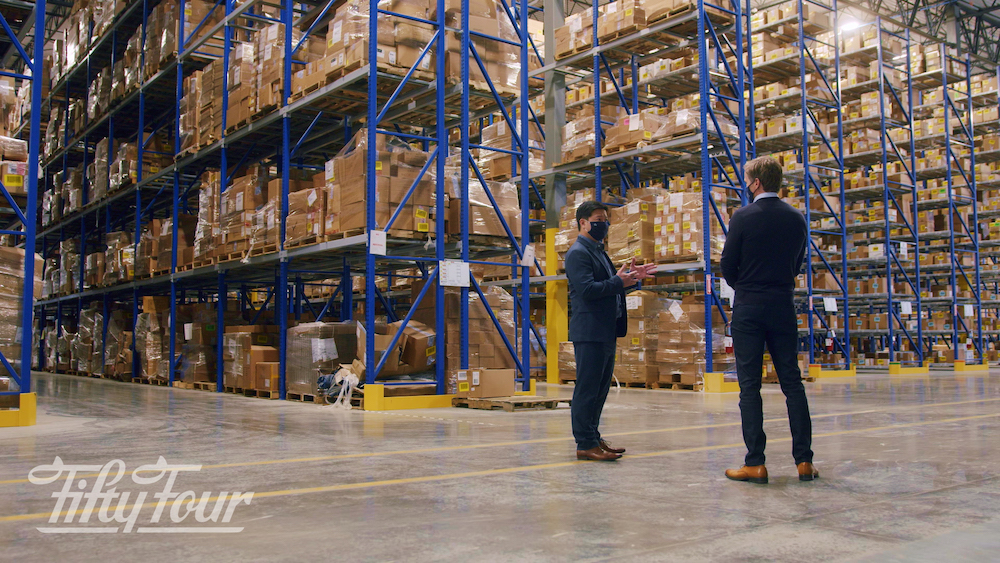
In today’s fast-paced supply chain environment, efficient and well-organized warehouses and distribution centers are the backbone of smooth operations. From ensuring the timely delivery of products and inventory to maintaining worker safety and fostering sustainable practices, warehouses have adopted numerous strategies that benefit both the bottom line and the employees. These practices not only enhance productivity but also contribute to a healthier and safer work environment.
Thankful for Policies and Procedures That Keep the Workers Safe
Safety protocols are an important facet of any warehouse or materials handling operation. Proper and ongoing training for all employees is one of the most significant strategies that an operation can incorporate into its daily routine. All warehouse or distribution center workers must know how to handle heavy and light equipment as well as hazardous materials and fragile inventory. They should be educated on the potential dangers in the warehouse and know how to stay safe and accident-free. Understanding how the entire operation works can be instrumental in employee dedication and safety. Setting benchmarks for productivity and goal setting can be a valuable tool for increasing worker productivity and satisfaction. Scheduling regular training of protocols for responding to an emergency, managing a crisis or dealing with a critical situation should be mandatory for all employees. Daily inspections of equipment, storage spaces and warehouse layout will help mitigate possible accidents or unfortunate situations. Plus, it ensures all components in the warehouse are working properly.
Ensuring that workers have personal protective equipment readily available to use in their ongoing tasks and responsibilities is the mark of a great warehouse operation. Depending on the industry and working environment, safety gear such as helmets, gloves and steel-toed shoes can assist with keeping the workers safe on the warehouse floor. Installing clear signage and markings for designated areas for storage, loading zones and pedestrian walkways is necessary. Most important is signage to alert anyone walking on the warehouse floor where heavy equipment, conveyors, forklifts and other machinery is in operation. Reducing or preventing worker accidents is a top priority. Warehouse managers need to be vigilant in knowing where accidents can happen and install measures to prevent as many as possible.
A clean and safe working environment is important for employees. Repetitive tasks and manual labor can trigger muscular and skeletal disorders so it is important to alleviate some of that strain. If feasible, designing workstations that reduce strain and injury keeps workers healthy and productive. Adjustable storage shelving, proper lifting tools and multi-functional work areas are some examples of keeping health risks to a minimum. Scheduling balanced shifts, appropriate food or rest breaks and adequate time off can improve employee satisfaction and reduce burnout. Also important is recognition for a job well done and acknowledging actions taken that are “above and beyond” normal conditions or tasks. With clear metrics, workers can achieve growth and development. Offering bonuses or incentives for productivity fosters a positive work culture and goes a long way to retaining essential workers.

Thankful for Strategies That Result in High Efficiency
Top on the list of strategies that result in increased productivity and efficiency are inventory management systems and warehouse management systems. Integrating technology into repetitive warehouse floor tasks and equipment such as forklifts and conveyor systems can make a huge difference. Systems like barcode scanning, RFID tagging and warehouse management software will streamline the tracking of goods, reduce errors, and improve inventory accuracy. Installing a first-in, first-out system for storage and shipping ensures that older stock is moved out before newer inventory. This process will reduce waste and ensure product freshness, if applicable. Implementing automated systems such as sorting, picking, and packing technologies can drastically reduce labor time and improve order fulfillment accuracy. There are a number of picking strategies to choose from. Depending on the type of warehouse or distribution center, options can be explored to determine the best strategy. Reducing travel time across the warehouse floor and workstations is the ultimate goal toward high efficiency.
The warehouse layout will determine how efficient the operational processes are conducted. Reviewing and monitoring the flow and traffic patterns on the warehouse floor should be an ongoing procedure. Keeping aisles clear and storage areas organized can greatly reduce the time-wasting flow of workers and inventory. Ideally, merchandise or products should be easily accessible and moved smoothly through the areas for receiving, storing, picking, packing and shipping. All space should be fully utilized in such a way that there is optimum usage for all workstations and storage spaces. The goal is to have a cost-effective process in place that results in less waste and optimized fulfillment. The workers on the warehouse floor can offer time-saving tips that will assist in their productivity and efficiency.
To keep up with customer demands and fast-paced materials handling, integrating real-time data access is extremely important for all warehouse processes. With real-time tracking and data systems, workers and managers can make informed decisions on inventory, operations, and logistics. Eliminating the need for a paper-driven tracking process will greatly increase the ability to monitor all procedures in the operation and avoid the loss of paperwork. Using mobile devices has become more prevalent in warehouse operations. Equipping employees with tablets and handheld devices for easy access to inventory data, order details, and schedules improves efficiency. More and more large warehouses and distribution centers are employing robotics into the daily operation of some tasks. Automated guided vehicles or collaborative robots can help with repetitive tasks, improving throughput while reducing manual strain on workers. Across all areas of the warehouse, collaboration and communication is required. Clear communication channels will ensure that all team members, from floor staff to management, know what is going on at any time. This important feature can prevent misunderstandings and improves coordination throughout the entire warehouse operation.

Thankful for Operations That Are Cost-Efficient and Cost-Saving
In order to sustain a high level of productivity and efficiency leading to a reduction in costs and cost savings across the operation, every practice and process must be sustainable. Energy efficiency ranks up there at the top of the list. Using energy-efficient lighting such as LED lights and energy-efficient equipment reduces the warehouse’s carbon footprint. Employing electric equipment instead of combustion engine machinery can also help with cost-saving. Reducing waste by recycling packaging materials and pallets can contribute to a greener operation and more attractive bottom line. Reducing overall waste should be a priority. As supply chain issues continue to affect warehouse and distribution center operations, sustainable sourcing could be researched. Where possible, a warehouse operation could source materials that are environmentally friendly or work with suppliers who adhere to sustainable practices.
Employing lean practices for continuous improvement is an excellent means to increasing efficiency and cost savings. Regular reviews of processes to find areas for improvement, reducing waste, and optimizing workflows are part of that strategy. Just-in-time inventory practices will keep minimal stock levels to reduce holding costs, prevent overstocking, and ensure goods are replenished as needed. Cross-docking is another efficient strategy to ensure efficient unloading of inbound shipments directly onto outbound trucks, reducing handling time and storage needs. Cross-training of employees has its merits for cost savings. Teaching staff multiple roles within the warehouse increases flexibility in operations and allows for smoother functioning during absences or peak times.
Having goals and operational objectives for the entire business and managing daily production and overall outcomes to those objectives can keep warehouse management and owners focused on achieving excellent results. Tracking and reevaluating key performance indicators is imperative to continually monitoring and measuring outcomes. It is essential in understanding how the warehouse is performing. The practices mentioned above contribute not only to efficient operations but also to the well-being of employees and the environment, making the practices and strategies something to be thankful for in today’s warehouse operations.
Thankful That 54 Intralogistics Can Help
54 Intralogistics offers integrated solutions for warehouse automation to help maximize the efficiency and profitability of your warehouse. The 54 Intralogistics team will review your warehouse logistics, layout, machinery, technology, workers and specifications. We will then suggest means to optimize processes from the loading/delivery dock to the packing and shipping area. Let us assist you in determining which solutions will work best for your warehouse operation.
